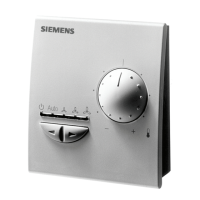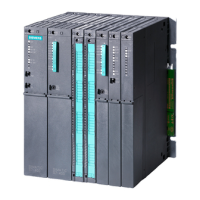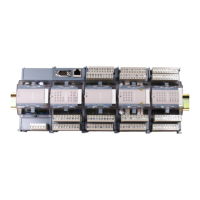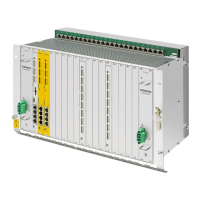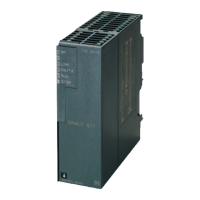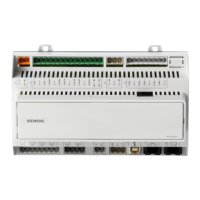Communications configuring
System- and communication configuring D7-SYS - SIMADYN D 3-41
Edition 12.2003
• The channel name, address stage 1 and address stage 2 are
specified at connection AR of the receive block. SIMADYN D executes
the STF utility "Read" on the remote variable.
• The addressed variable must be defined for the communications
partner.
Address examples:
1. Entry at function block CTV:
− AT: "PZD1.APPLBEZ1.PZDEMPF"
− SIMADYN D writes into the remote variable, with the name
"PZDEMPF" via the application association "APPLBEZ1".
2. Entry at function block CRV:
− AR: "PZD2.APPLBEZ2.PZDREAD_BGT3__7P"
− SIMADYN D reads the remote variable, with the name
"PZDREAD_BGT3__7P" via the application association
"APPLBEZ2".
The structure of the process data objects is derived from the CFC
configuring of the "virtual connections" (refer to the Chapter
Communications utility, process data).
The SIMADYN D data types are converted into STF data types using the
following table:
SIMADYN D data type STF data type
Integer Integer16
Double Integer Integer32
Bool, Byte Unsigned8
Word Unsigned16
Double Word Unsigned32
Real, SDTIME Floating-Point
Table 3-19 Converting SIMADYN D data types into STF data types
• If precisely one connection is assigned for each transmit/receive
block, then a basic STF variable is defined.
• If several connections, with the same STF data type, are assigned to
each transmit/receive block, then an "Array" data type is defined. The
number of array elements precisely corresponds to the number of
connections.
• If several connections with different STF data types are assigned to
each transmit/receive block, then a "Structure" data type is defined.
The number of structure elements precisely corresponds to the
number of connections.
STF variable
structures

